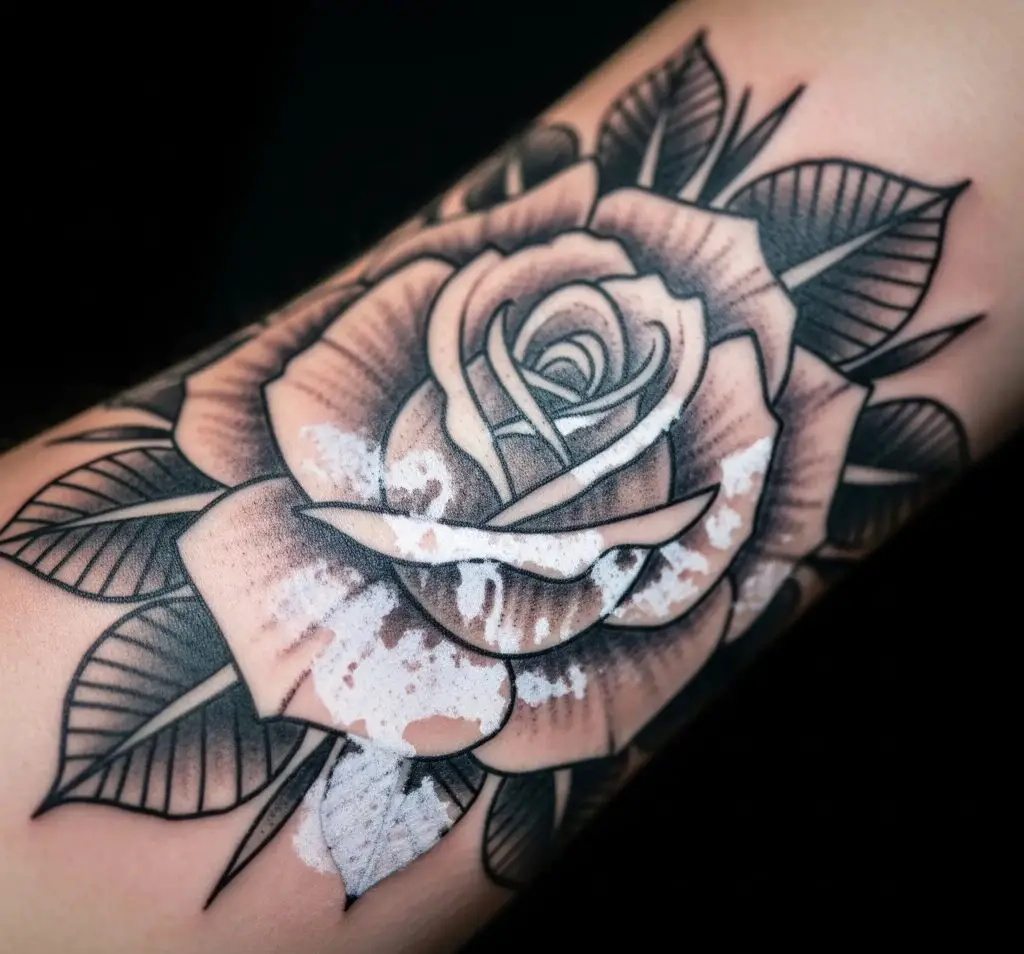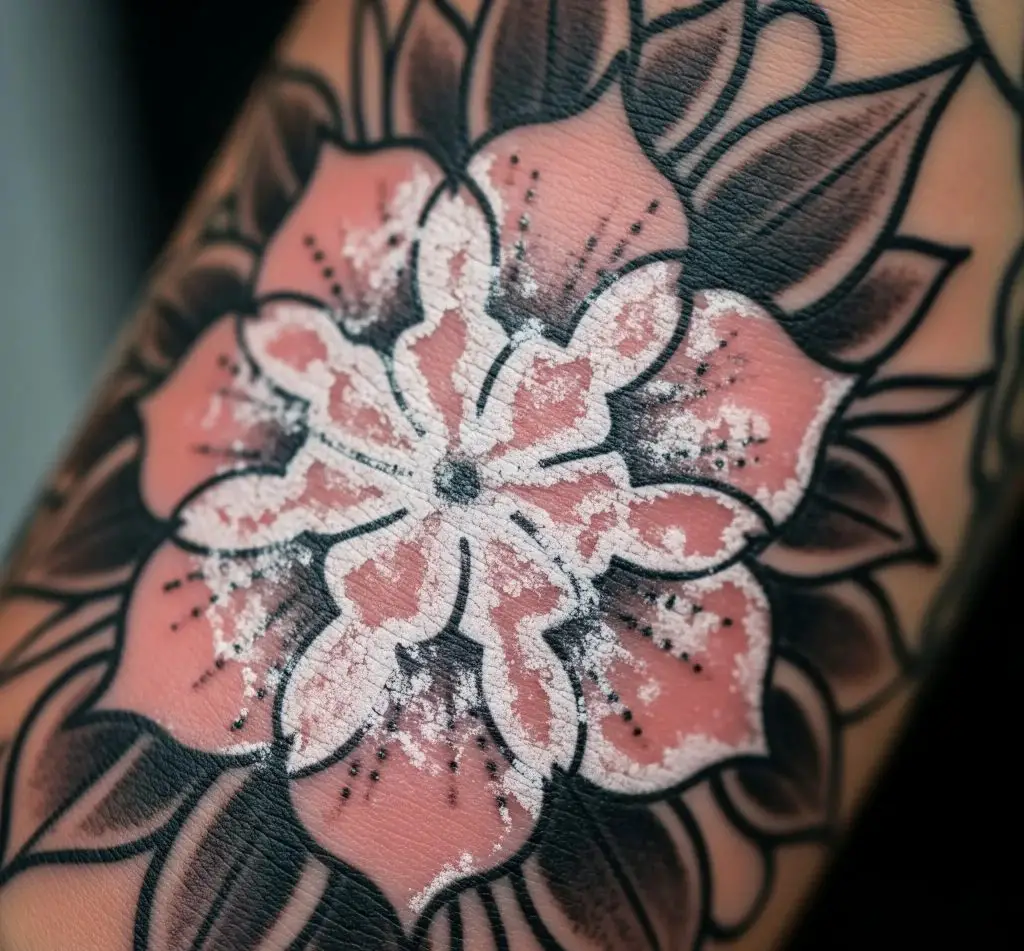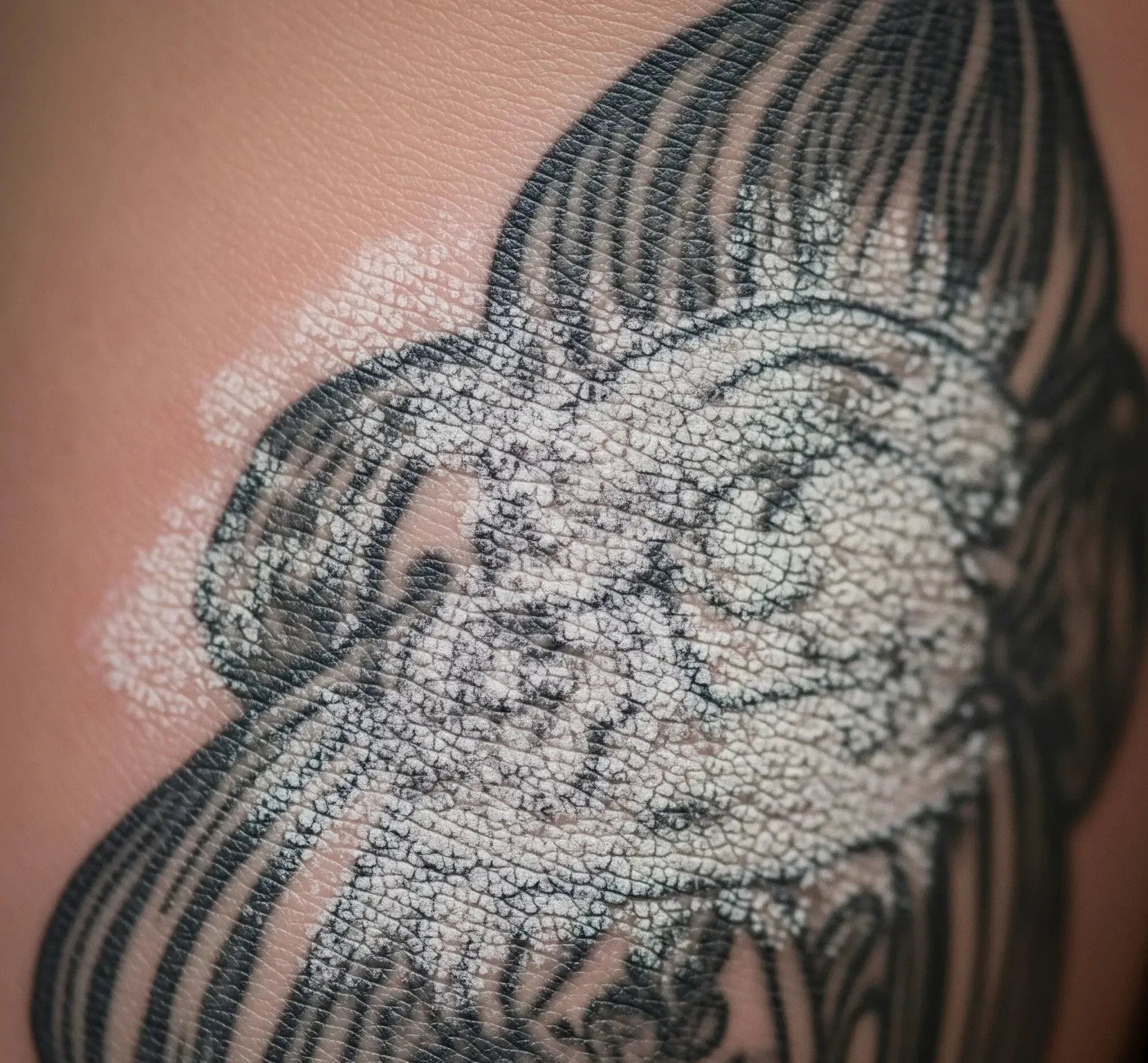Why Is My Tattoo Turning White? If you’ve noticed your tattoo looking pale, cloudy, or even white in some spots, it can be confusing and a little worrying.
Tattoos are meant to be colorful and clear, so when the colors start fading or turning white, many people wonder if something is wrong.
The good news is that this change is often normal, especially during the healing process. But sometimes, it can also mean there’s an issue that needs attention.
In this article, we’ll explain the most common reasons behind “Why Is My Tattoo Turning White,” from natural skin healing to reactions and fading.
By understanding what causes this whitening, you’ll know when to stay calm and when to take action. This simple guide will help you keep your tattoo looking its best for years to come.
What Does It Mean When A Tattoo Turns White?
A tattoo turning white can be surprising, but it usually has a reason behind it. It can happen during the healing phase, or due to skin reactions or fading.
Possible meanings:
- Healing process causing dryness and light scabbing.
- Skin irritation or minor allergic reaction.
- Ink settling under the skin.
- Signs of tattoo aging or fading.
- Over-moisturizing or product buildup.
Is It Normal For A Tattoo To Look White During Healing?
Yes, it’s common for tattoos to look white or dull during the healing phase. This is typically temporary and resolves as the skin recovers.
Why it happens:
- New skin forming over the tattoo (also called “silver skin”).
- Dryness or peeling of top layers.
- Scabbing that appears lighter in color.
- Reduced ink visibility due to swelling or flaking.
Common Causes Of A Tattoo Turning White
There are several causes that may lead to a tattoo appearing white. Understanding these helps in identifying whether it’s normal or something to address.
Common causes:
- Dry healing or over-drying: Skin becomes flaky and white.
- Over-moisturizing: Lotion buildup can make skin look pale.
- Scabbing: White or grayish scabs during the healing phase.
- Allergic reaction: Skin raises and lightens due to irritation.
- Poor aftercare: Leads to uneven healing and white patches.
- Ink rejection: Body tries to push out ink, causing discoloration.
How Ink And Skin Tone Affect Tattoo Color Changes?
Tattoo appearance is also influenced by your natural skin tone and the type of ink used.
Ink-related factors:
- White ink tattoos: More prone to fading or appearing cloudy.
- Light colors: Like pastels, may turn chalky over time.
- Ink quality: Low-quality ink fades unevenly.
Skin tone considerations:
- Darker skin tones: Can cause white or light ink to appear less vibrant.
- Lighter skin tones: Redness and peeling show more clearly, creating a white hue.

Is White Skin Over My Tattoo A Sign Of Infection?
Not always, but sometimes. White patches can be harmless, but if paired with other symptoms, it may be a sign of infection.
Watch for infection signs:
- White skin along with pus or yellow fluid.
- Red streaks around the tattoo area.
- Persistent swelling, pain, or heat.
- Foul odor or excessive crusting.
Tattoo Scabbing vs. Whitening: What’s the Difference?
It’s important to distinguish between regular scabbing and whitening due to other reasons.
Scabbing:
- Normal part of healing.
- Often brownish or gray in color.
- Should flake off on its own.
Whitening:
- Usually from dry skin, lotion buildup, or healing skin.
- May feel smooth or filmy.
- Doesn’t flake like a scab.
Can Allergic Reactions Make A Tattoo Appear White?
Yes. Allergic reactions to ink, especially colored or white ink, can cause changes in how the tattoo looks.
Symptoms of ink allergy:
- Raised white or pale bumps on the tattoo.
- Persistent itchiness and irritation.
- Redness or rashes around lighter ink areas.
- White patches surrounded by inflamed skin.
Does A White Appearance Mean My Tattoo Is Fading?
Not always, but sometimes fading can make tattoos look whiter or less vivid, especially for light-colored designs.
Fading signs:
- Tattoo loses definition and sharpness.
- Colors appear washed out.
- Exposure to sun or chemicals accelerates fading.
- Tattoo looks “dusty” or cloudy.
When Should You Worry About A White Tattoo?
While some whitening is normal, certain signs may require medical or professional help.
When to be concerned:
- Whitening lasts more than 4–6 weeks.
- Accompanied by pain, oozing, or swelling.
- White patches expand or look infected.
- Tattoo looks uneven in color or texture.
How To Treat A Tattoo That’s Turning White?
Treatment depends on the cause. Most whitening during healing needs gentle care and patience.
Treatment tips:
- Moisturize regularly with fragrance-free lotion.
- Avoid picking or scratching.
- Use mild soap and water for cleaning.
- Protect from sun exposure.
- Avoid harsh creams or alcohol-based products.
- Apply a tattoo-safe ointment if dryness is severe.
Can Touch-Ups Fix A White Or Faded Tattoo?
Yes, touch-ups can restore color, fix faded spots, and improve definition.
Touch-up info:
- Usually done 4–8 weeks after initial healing.
- Helps re-saturate faded ink.
- A good option for tattoos affected by sun or poor healing.
- Should be done by a licensed professional.

Tips To Prevent Your Tattoo From Turning White
Preventive care helps keep tattoos looking fresh and vibrant.
Prevention tips:
- Keep tattoo moisturized but not over-saturated.
- Use tattoo-safe sunscreen when outdoors.
- Follow aftercare instructions exactly.
- Avoid submerging tattoo in water too early.
- Wear loose clothing to avoid friction.
- Avoid cheap or unknown ink studios.
When To See A Dermatologist Or Tattoo Artist?
If you’re unsure about what’s causing whitening, it’s best to consult a professional.
See a dermatologist if:
- You suspect an infection.
- Whitening is accompanied by pain or itching.
- There’s a history of skin conditions.
See your tattoo artist if:
- The design looks uneven or faded.
- You think you need a touch-up.
- You’re concerned about ink reactions.
Does Sun Exposure Make Tattoos Look White Or Cloudy?
Yes, sun damage can fade your tattoo and make it appear white, dull, or cloudy.
Sun effects:
- Breaks down ink pigments, especially lighter colors.
- Causes peeling and long-term fading.
- Makes healed tattoos look hazy.
- Speeds up aging of skin around tattoo.
Protection tips:
- Always use broad-spectrum SPF 30+ sunscreen.
- Avoid direct sun in the first 2–4 weeks.
- Cover the tattoo with clothing if possible.
Healing Timeline: What To Expect In Each Stage?
Understanding the healing process helps manage expectations about color and appearance.
Healing stages:
Week 1:
- Redness, swelling, slight scabbing.
- Tattoo may look brighter or shiny.
Week 2:
- Peeling begins, tattoo looks dull or flaky.
- Some white patches may appear.
Week 3–4:
- Skin settles, white flakes reduce.
- Tattoo looks cloudy but clearer than before.
Week 5 and beyond:
- Full healing for most tattoos.
- White appearance should fade if healing properly.
